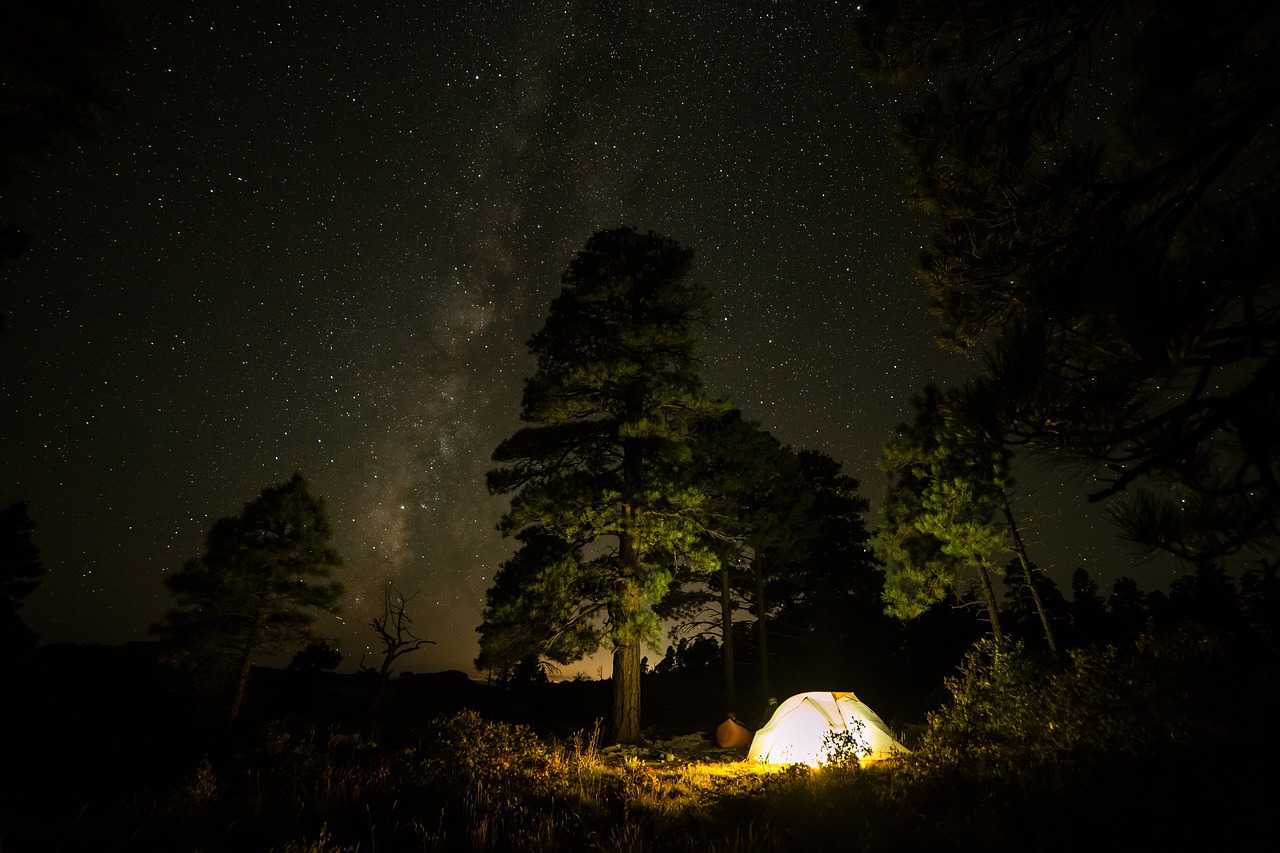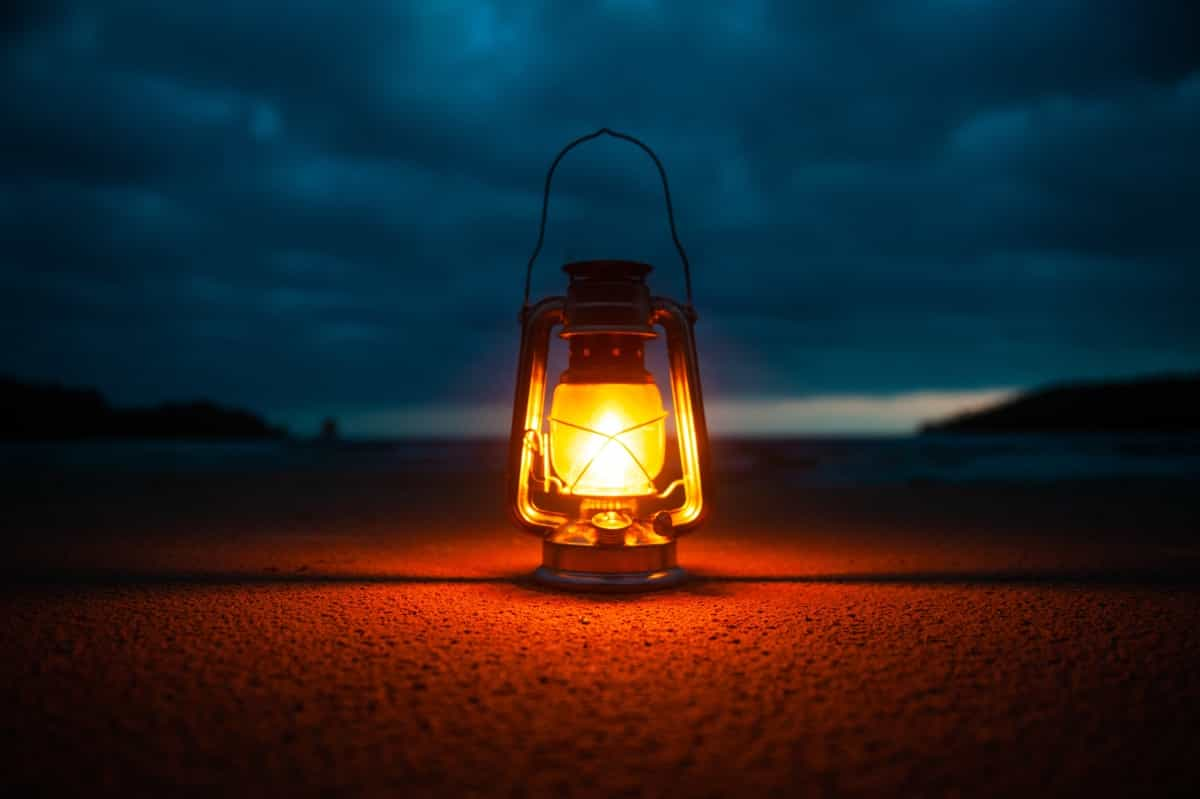Camping lights buying guide
A reliable light source is an essential for any camping holiday, whether it’s for evening board games, finding the way to the bathroom in the dark or assisting you in your hunt for your lost ear plugs. With several types of camping lights out there, it may be tricky to narrow down your choice.
Whether you’re looking for lighting for a tent, camping pod, caravan, motorhome or other camping accommodation, there are many pros and cons to weigh up when it comes to different types of power sources such as electric, LED, battery, solar and gas. The same goes for specific camping light designs like torches, lanterns and spotlights.

How to choose camping lights
1. Know the difference between electric, LED, battery-powered, solar and gas lights.
Whether you choose an electric, LED, battery-powered, solar or gas light will depend upon your pitch type, luggage space and available resources, such as extra batteries or a battery pack.
We’d recommend that most campers use battery-powered camping lights for a reliable light source that only requires spare batteries, unless you’re staying on a pitch with electric hook-up, where electric lights will be a feasible option. Even so, you never know when there might be a power cut or connection problem, so always pack a back-up light.
Electric lights:
Electric lights are a powerful source of light. However, they do require a pitch with an electric hook-up. Because they emit heat, they can be hot to the touch and can be a hazard for young children or pets.
Battery-powered lights:
Battery-powered lights are a powerful light source that can be used without electricity. However, you’ll need to free up space for spare batteries and/or a battery pack.
LED lights:
Eco-friendly LED lights use less energy than a typical bulb. They’re usually battery-powered, so you won’t need to pack so many spare batteries. Another perk is that they’re very safe around young children because they produce very little heat.
Solar lights:
Solar lights are another eco-friendly option. They’re powered by sunlight, meaning you’ll need sufficient sun for them to recharge. In the winter or dark weather they could run out of power, leaving you in the dark.
Gas lights:
Gas lights are a very powerful source of light. However, they emit a very high amount of heat, making them a safety hazard in a small space such as a tent.
Red lights:
If you want a light that won’t disrupt your night vision, a red camping light will come in handy. The downsides to red lights are that they’re often dimmer than white light.
2. Consider whether you need multiple camping lights.
Depending on the number of people in your group and the size of your space, you may need several camping lights to sufficiently light up your space.
If you’re going to be assembling any equipment, eating outdoors or pitching or taking down a tent down in the dark, it’s likely you’ll need a few powerful camping lights to avoid scrambling around looking for missing pieces of kit.
3. Prioritise lightweight camping lights.
Packing light is key for any camping trip, especially when you’re hiking between campsites or you have a long walk between your pitch and your car, so your camping lights should be as lightweight as possible.
4. Look for a compact camping light.
Compact camping lights might have a foldable design so that they can easily be packed away, or a small structure that is easy to fit into your backpack or car boot.
5. Consider the extra weight and space taken up by spare batteries or power packs.
You may need to free up extra space for spare batteries or power packs for rechargeable camping lights, so take this extra baggage into consideration when you decide on a camping light.
Different types of camping lights
There are many different types of camping lights out there, including different types of torches, lanterns and other options for illumination that suit different types of camping.

Handheld torch: Lightweight, portable and durable, handheld torches are easy to aim and powered by batteries, so they don’t require an electricity source. You’ll need to pack spare batteries and bear in mind that they are easy to misplace and unsuitable for activities that require both hands.
Head torch: Head torches are a hands-free light source with an adjustable headpiece. The headbands can feel uncomfortable for some campers and aiming the light can be tricky, as it requires you to turn your head from side to side; however, they free up your hands.
Lanterns: Lanterns come in electric, battery-powered, LED, gas or solar forms. These 360-degree light sources often feature a built-in hook, so they can be hung from the ceiling to illuminate entire rooms or used as a handheld light source. They are bulkier and heavier than torches.
Spotlights: A spotlight is a very powerful and portable light source that can be hung from a ceiling or used as a torch.
Wind-up lights: All you need to do is to wind a crank for this light to illuminate the way. They don’t rely on electricity, batteries or the sun, but the power usually lasts for under half an hour (depending on the light) and they are dimmer than other light sources.
LED tent pegs: Battery-powered LED tent pegs illuminate your tent pegs and guy lines at night, making it easier to find the way out of your tent or make any adjustments to your set-up.
What light should I use for tent camping?
When you’re tent camping, we’d recommend bringing along at least one portable camping light such as a durable handheld torch or head torch to find your way around your pitch or campsite in the dark, as well as a light source that can illuminate your space at night by being hung from the tent’s ceiling.
LED, electric, solar or battery-powered lanterns are safe to hang in a dry tent. You should avoid gas lanterns, because they emit lots of heat, making them a safety hazard in a space as small as a tent.
Those of you who will be pitching or taking down a tent in darkness will also need to remember that you’ll need a head torch to free up your hands.
For more specific advice on tent lights, browse our specific buying guide for tent lights.
What light should I use on a non-electric pitch?
You will need a light source that doesn’t use electricity, such as a battery-powered handheld or head torch and a battery-powered LED lantern. Other options include solar lights or wind-up lights, but these are less reliable because they rely on the sun or mechanical force for power.
What light should I use in my caravan or motorhome?
If you’re staying in a caravan or motorhome, it’s likely that you will have access to electric hook-up. An electric LED light will use the smallest amount of electricity and keep your space sufficiently lit. Always keep battery-powered torches or lanterns as a back-up in case of a power outage.
FAQ
What are the benefits of a red camping light?
Red camping lights are designed so that they don’t interfere with your ability to see in the dark.
What light should I use for tent camping?
Use a portable torch, head torch or spotlight to find the way around outside your tent and hang a battery-powered LED lantern from your ceiling.
What light should I use in my caravan or motorhome?
Use an electric LED light to save energy and keep battery-powered torches or lanterns as a back-up.